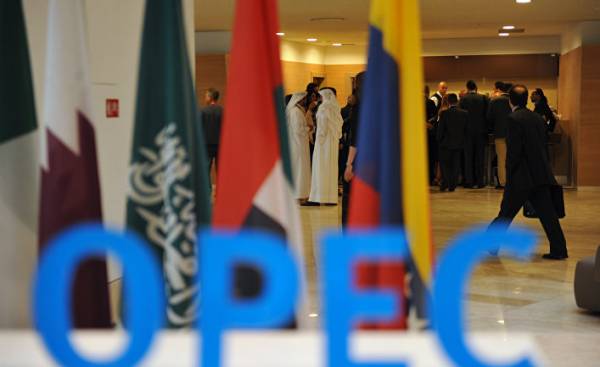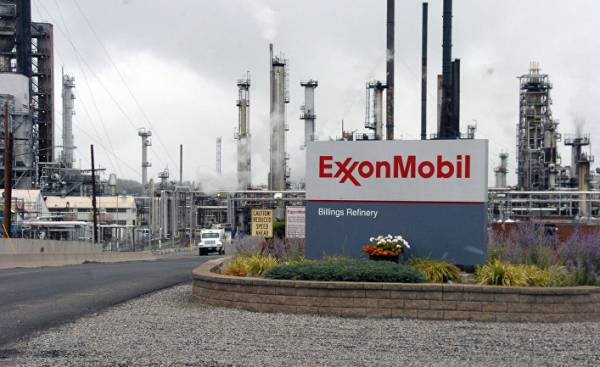
At about this time a year ago, namely on 18 April 2016, to no avail, a meeting was held on oil in Doha, which lasted more than seven hours with the participation of 16 countries, both within and outside OPEC. The purpose of the meeting was to reach agreement on the freezing of oil production. Then the American newspaper New York Times wrote that this failure would be an obstacle to establish trust in the markets, and indeed, it happened because the oil was extracted in an excess amount.
Now, perhaps, the situation has changed, and the market that needs the balance of supply and demand since mid-2014, according to analysts, is already quite close to him. It should be understood, based on what the expectations are, and answer thus to the main question — surely after nearly three years, the oil market finally approached the equilibrium state? However, before answering this question, we need to talk about the importance of this balance and how does it relate to the crisis in the oil market.
First we need to understand that the crisis in the oil market from the very beginning was caused by an imbalance between oil demand and supply. With increasing gap between supply and demand, oil prices collapsed, and all attempts on the market in recent months, was intended to reduce this gap. In particular, the market experienced several stages: the excessive increase in the supply, and a significant reduction in demand, and sometimes both.
According to economic theory, the market reaches equilibrium when the desired volume of oil equal to the volume of proposals. So, if the market price is higher than equilibrium, supply increases as long as prices won’t be lower and not reach the equilibrium value, leading thus to a reduction of the oversupply. On the other hand if the market price is below equilibrium, it leads to excess demand for goods, and demand will increase until, until the price becomes higher and reaches the equilibrium value. Thus offset by excess demand.
The signs of the imminent balance
Since April 11 was successively published several statements and reports, which together indicate that the oil market is on the verge of balance. Among them are the following.
The obligation to “OPEC”
On 11 April, we heard that in March, OPEC has cut oil production in an amount greater than required for the performance of their obligations under the agreement on the appropriate reduction of oil production. The parties reached this agreement for the first time in eight years, and this suggests that the market was given a powerful impetus, and he will soon come into equilibrium.
The organization agreed to reduce production by about 1.2 million barrels per day within six months from the first of January, in an attempt to give impetus to the growth of prices and to reduce the oversupply. However, according to data published by Reuters, there were a reduction of oil production at scales larger than had been promised by OPEC. According to calculations of the organization, the obligation was carried out at 104%, which can only help the balance in the oil market.
The Promise Of Russia
12 April, Russian energy Minister Alexander Novak said that by the end of the month Russia will cut oil production by 300 thousand barrels per day, in accordance with the agreements with other leading oil producers. He also noted that the companies not received any complaints regarding the agreement to reduce oil production on the world market.
The Minister said that later this month he plans to meet with representatives of Russian oil companies in order to discuss the situation on the world oil market. The Novak is not less important than the commitment made by OPEC members, because Moscow is the largest oil producer outside the organization, and, therefore, the promise of the Russian Minister could be a step leading to greater stability in the market.
The Activation Of China
On 13 April, the customs authorities made statements, according to which in March increased volume of Chinese imports of crude oil exceeded all expectations and reached a record high in history. Thanks to the revitalization of the independent oil refiners in March, China imported crude oil in a volume of 9.17 million barrels a day (compared to 8,286 million barrels a day in February), thus surpassing even the United States. The previous record volume of oil imports was reached in December and made up 8.57 million barrels a day.
According to the energy information Administration of U.S. Department of energy in the first quarter of this year, China remains the largest importer of oil in the world, as oil imports, the U.S. has 7.97 million barrels a day in March and to 8.17 million barrels per day in the first quarter.
Statement of China about the slowdown in the second economy in the world was one of the reasons for the fall in oil prices over a long period of time. As a result, with the sharp increase in demand for oil from China there is no doubt that it will greatly facilitate the return the market to equilibrium.
The international energy Agency is full of optimism
April 13, the International energy Agency reported that after almost three years of surplus production the world demand for oil is finally coming to exceed supply, despite the increase in the unused surplus of crude oil. According to the Agency, the oil reserves of the Organization for economic cooperation and development (OECD) declined by 17.2 million barrels in March of this year.
The Agency also reported that total stocks in OECD countries fell by 8.1 million barrels in February, reaching 3,055 billion barrels, while demand exceeded offer by about 200 thousand barrels per day in the period from January to March of 2017.
“The Outlook for the second half of the year is of interest” — the International energy Agency described the situation changes in the coming months. It is known that it has lowered its forecast for growth in world oil demand in 2017 by 40 thousand barrels per day to 1.32 million barrels per day. As for the proposal, it was reported that world oil production decreased by 755 thousand barrels per day in March, reaching $ 95,98 million barrels per day, while OPEC and their partners signed an agreement and pledged to cut oil production to 1.8 million barrels per day in the first half of this year.
Maybe this report represents one of the few optimistic reports published by the International energy Agency, but it is not incompatible with the General atmosphere, which indicates the relative improvement of the situation in the oil market, which all have been waiting for.
Aramco and restore balance
April 14, the current CEO of Saudi Aramco (the largest oil company in the world) Amin Nasser said that the oil market in the near future will return to equilibrium and that in the long term, demand for oil will increase. In addition, he confirmed that in coming years the supply of oil will be reduced regardless of changes in demand.
Nasser predicted that the situation on the market in the future will be more sustainable. He also did not rule out the possibility that the balancing market will be preceded by a period of volatility.
This statement from Aramco not so much was a continuation of the wave of statements by Western countries that are concerned about the balance in the oil market in the short term, much evidence that the balance is already becoming a reality, which in turn is good news for Saudi Arabia.
Iranian “node”
On 16 April the Minister of oil of Iran Bijan Namdar Zanganeh said that the majority of producers advocate that further reduce oil production. And it is the OPEC members, and those who are not part of this organization. According to the Minister, if others will agree to take this step, Iran is its only support.
Although the Iranian Minister has linked his country’s commitment to this decision with the decision of other oil-producing countries, it can be noted that the tone of Iranian statements has considerably changed compared to what it was before the conclusion of the agreement. All this suggests that the current situation in the oil market very different from the situation in previous months and maybe the market will reach balance in the near future.
Saudi Arabia chose not to wait and took the opportunity to reinforce optimism in the markets. So, on 17 April, the Minister of energy of Saudi Arabia Khalid bin Abdulaziz al-Faleh had issued a statement in which he noted that OPEC and outside OPEC will do whatever is necessary to ensure stability in the oil market, and explained that they are ready to fulfil their respective obligations within the next 6 months or more.
Although he noted that it is too early to talk about it, if necessary, according to him, the country was prepared to extend the agreement to reduce oil production, which is due to expire in June. He stressed that the level of commitment to oil producers within OPEC and outside the decision exceeds 100%, which is a positive thing that should not be taken into account.
The market ignores negative signals
It should be noted that all these positive signs began to appear after the energy information Administration of U.S. Department of energy predicted the increase in US production of crude oil in 2017 and 2018. By itself, this forecast has produced a negative effect, especially in contrast to the previous report, it is projected a greater increase in oil production. So, according to a new report in 2018, the production volume will increase by 680 thousand barrels per day, reaching a level of 9.9 million barrels per day compared with of 9.22 million barrels a day in 2017.
 © AP Photo Matthew Brown, File American oil and gas Corporation Exxon Mobil
© AP Photo Matthew Brown, File American oil and gas Corporation Exxon Mobil
In addition, the energy information Administration changed the Outlook regarding the growth of oil production in 2017, adding that the volume will increase by about 350 thousand barrels per day (compared with the previous forecast to increase by 330 thousand barrels per day). At the same time, it is expected that the demand for oil in the U.S. will increase in 2017 by about 250 thousand barrels per day, compared with previous forecasts for an increase of 210 thousand barrels per day.
Whether there will be a balance in the market during the last 3 months of 2017?
Among these rather optimistic forecasts about the situation on the market should also pay attention to the opinion of some observers, according to which the third quarter of this year will be crucial for establishing equilibrium in the market. These expectations are growing as exporters of oil closer to extend the agreement to reduce oil production for a further six months, particularly after the Gulf countries supported this initiative. Thus, the stabilization of the oil market is possible in the near future.
Changes in the attitude of Nasser to the issue, saying that OPEC does not see a threat the development of shale oil industry in the US, because this is not enough to make up for the expected shortage of oil supplies. All of this can contribute to ending the current disputes over the oil industry and the issues associated with excess oil in the market, low prices, the need to reduce production to stimulate price increases and ensure the correct amount of oil to meet growing demand in the future.
The history of the oil industry is associated with a succession of UPS and downs. In this regard, it is expected that after the balance of the market will enter a new phase, which will be accompanied by a sharp increase in demand and rising prices, and so necessary measures need to be taken now.
Finally, it should be noted that the balance in the oil market no longer seems something impossible, on the contrary, the establishment of equilibrium will occur faster than ever, but only if the extension of the agreement on the reduction of oil production. Otherwise, the market will return to its previous state, which is not in the interest of any of the oil producing countries, including within OPEC. Thus, all will become clear in the second half of 2017.







